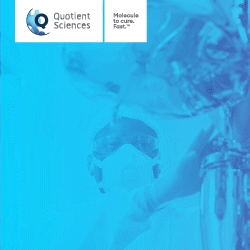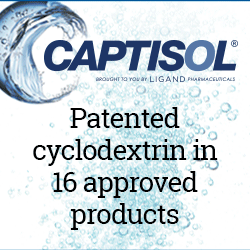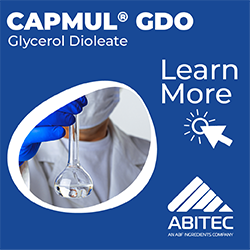Trehalose: A Powerful Excipient in the Formulation Toolbox
By: Ben Nelson, PhD, and Chris Wilcox (inquiries to: cs@pfanstiehl.com)
Trehalose is a non-reducing disaccharide consisting of two glucose molecules linked by an α,α–1,1 glycosidic bond. In the pharmaceutical industry, products that benefit from the stabilizing effects of trehalose include, but are not limited to: monoclonal antibodies (mAbs), antibody drug conjugates (ADCs), fusion proteins, peptides, stem cells, and vaccines. Table 1 is a brief list of drugs that include trehalose as a component of their formulations.

Many of the stabilizing effects of trehalose are derived from its unique properties. The glass transition temperature (Tg) is between 110°C and 120°C, which is the highest of the disaccharides. Formulations lyophilized in a glassy amorphous matrix of trehalose can be stored at higher temperatures without concern of negative consequences associated with molecular mobility, since molecular mobility is negligible upon storage 50°C below the Tg of the amorphous matrix. Primary drying during lyophilization should be below the freeze concentration glass transition temperature (Tg’) to prevent cake collapse. In comparison to sucrose, the Tg’ of trehalose is about 3°C higher, translating to an ~13% reduction in primary drying time for every 1°C difference in Tg’. Trehalose itself is intrinsically stable and is not susceptible to breakdown to reducing sugars, since the free energy of the glycosidic bond is <1 kcal/mol. Formulation at pH below 5 is also possible with trehalose. After 1 hour in solution at pH 3.5, >99% of trehalose remains compared to ~0% sucrose remaining in the same conditions.
The quality of excipients used should also be of high importance to the formulator since the use of products known to be of the highest purity can mitigate risk from bench top development through commercialization of therapeutics. There are different grades of trehalose available on the market. Ongoing Pfanstiehl studies have demonstrated that Pfanstiehl’s trehalose contains lower levels of impurities and endotoxins than other marketed brands by factors of 5 and 12, respectively. Details can be shared upon request.
Stabilization of proteins is best taken on a case-by-case basis. Proteins that do not vary significantly in primary structure can vary significantly in secondary and tertiary structure, and reactivity to their environment. Formulation components that work well for one system may not work for a similar system. Therefore, formulation scientists must use all of the tools they have at their disposal. Despite being less ubiquitous in the pharmaceutical industry when compared to other excipients, such as sucrose and mannitol, trehalose should not be overlooked as a powerful tool for drug product stabilization in both liquid and lyophilized drug product preparations.
Known for nearly a century for its first-in-class carbohydrate chemistry expertise, Pfanstiehl has built a reputation for high-quality, cGMP-produced, parenteral-grade excipients (ie, trehalose, sucrose, mannitol, galactose, mannose, sorbitol, maltose, ribose) and for highly potent APIs at its US headquarters north of Chicago. For more information about Pfanstiehl’s Pure Formulation Solutions, visit www.Pfanstiehl.com.
Total Page Views: 11182
















